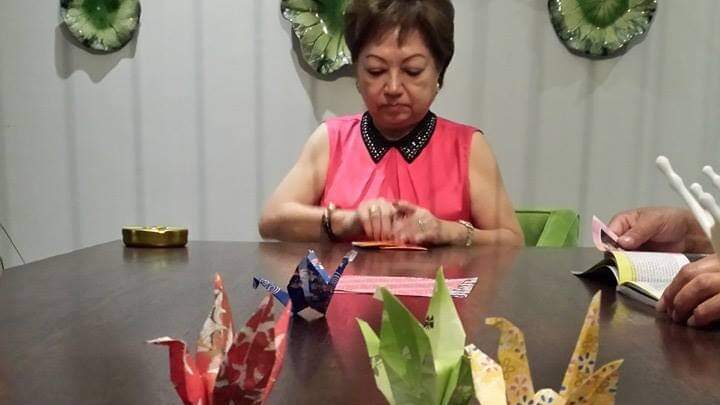Practicing origami helps reduce stress, anxiety, depression or other ailments, both physical and emotional. Centers for the disabled, hospitals, prisons, schools and civic centers introduce it as an element of psychological or physical therapy.
Origami is a paper-based artistic expression that dates back to first or second-century China. Japanese people adopted it in the sixth century.
The word “origami” comes from the Japanese term “ori,” which means to fold, and “kami,” which stands for paper.
Origami practitioners create geometric figures by folding paper. They range from simple shapes to animals, masks, fictional characters and even cartoons.
“Origami can be applied to a thousand things, from making Mother’s Day cards to decorating and building important works at any age,” said María del Carmen Quiroz, a graduate in social psychology from the Mexican University.

People of practically any age can develop origami skills. *** El origami es una técnica que puede desarrollarse prácticamente a cualquier edad. (Christian Valera Rebolledo/Café Words)
Learning origami takes practice. The discipline stimulates both brain hemispheres: the rational side and the creative side. Therefore, it can be challenging at first, and leveling up may require concentration. However, creating and following patterns help organize one’s mind.
“When folding paper, the entire cortex and the interior of the brain work; basically, the whole brain” is at work, said Quiroz. “The technique is wonderful when you consider the long-term benefits and that you only need paper and your hands” to practice it.
This mental and manual exercise helps to relax the body and raise one’s self-esteem, as it is proven that doing an activity from start to finish improves one’s self-image.

Origami activates the senses of sight and touch and enhances memory. When practicing it, a person must visualize shapes and replicate them on paper using their memory. This exercise stimulates sequential visual memory and can help the visually impaired learn geometry.
Origami practitioners must follow a set of steps to create a particular shape, a helpful process to treat attention deficit disorder, as it shows that patience and perseverance may lead to pleasure and satisfaction.
The art may also aid in rehabilitating people with muscle control problems, rheumatism or those looking to improve their hand-eye coordination.

“Origami’s benefits can be divided into three. First, there are manual skills, including hand-eye coordination. Then, there is the emotional part, which involves the satisfaction of being able to create. The third would be knowledge. When practicing origami, you must follow instructions and pay attention. That makes the brain activate the junctions between neurons helping people to acquire new skills,” said Quiroz.
Origami also improves non-verbal thinking, spatial and dimensional understanding, imagination, attention and concentration.
(Translated and edited by Gabriela Olmos. Edited by Melanie Slone and Carlin Becker.)
The post The Relaxing Art Of Origami appeared first on Zenger News.

